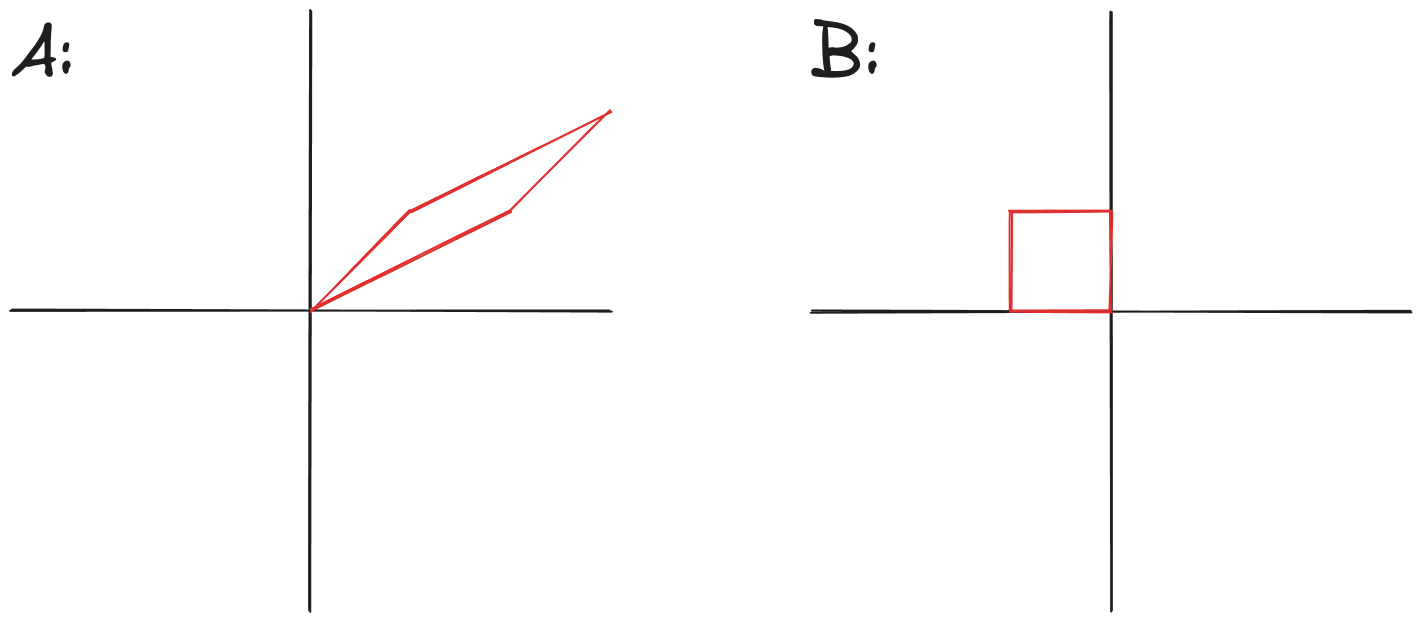1. Find the image of the vector under the linear transformation where:
a.
b.
2. Determine if is in the range of…
where
3. Show that the function..
is not a linear transformation:
- The zero vector does not result in a zero output
- There’s a square, so it can’t be linear unless there’s something to cancel it out, which there isn’t.
4. Determine if the linear transformation..
given by is one-to-one. Similarly, determine if it is onto. a. One-to-one and onto b. onto c. one-to-one
5. Find the matrix such that the linear transformation…
is given by :
6. Graph the image of the unit square…
in the first quadrant under the linear transformation is given by :
a.
b.

7. Suppose that is a linear transformation..
and that and are linearly dependent. Prove that and are also linearly dependent.
If and are scalar multiples of one another, then no matter what you multiply them by, so long as it’s the same for both of them, they will maintain their relationship.
8. Prove that is a linear transformation.
This can satisfy both additivity and homogeniety, so it is a linear transformation.